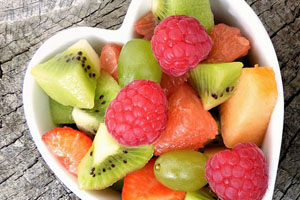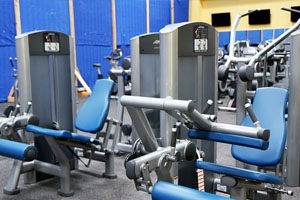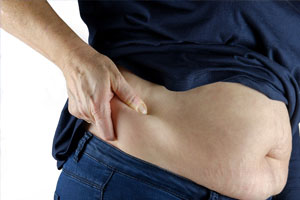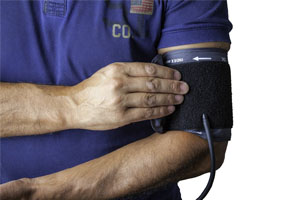Uncover the secrets to a flatter belly by exploring the impact of foods Learn which foods can help you burn belly fat and achieve your weight loss goals effectively
What foods help burn belly fat? Many people aspire to achieve a flat and toned belly, and while exercise is essential, diet plays a crucial role in achieving this goal. The foods you consume can either help or hinder your efforts to burn belly fat. In this article, we'll explore the connection between diet and belly fat, highlighting the foods and strategies that can support your journey towards a slimmer midsection. Whether you're looking to shed a few extra pounds or maintain a healthy weight, understanding the impact of your food choices is the first step towards a flatter belly.
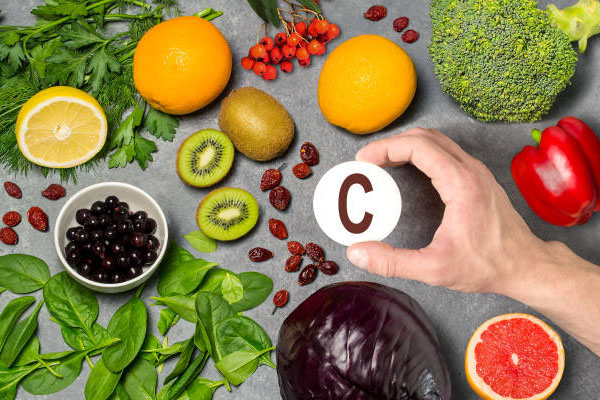
Understanding Belly Fat
Belly fat, often referred to as abdominal or visceral fat, is the excess fat stored in the abdominal cavity. Unlike subcutaneous fat, which is found just beneath the skin, visceral fat accumulates around your internal organs, including the liver, pancreas, and intestines. While some amount of visceral fat is necessary to cushion and protect your organs, excessive belly fat can have detrimental effects on your health.
What Is Belly Fat?
Belly fat is made up of two primary types:
- Subcutaneous Fat: This is the fat layer just beneath the skin, which you can pinch with your fingers.
- Visceral Fat: This is the deeper fat that surrounds your internal organs.
Why Is Belly Fat a Concern?
Excessive belly fat is a significant concern because visceral fat is metabolically active. It releases various substances into the bloodstream, affecting insulin sensitivity, blood pressure, and blood lipid levels. These factors increase the risk of several health issues, including:
- Heart disease
- Type 2 diabetes
- High blood pressure
- Stroke
- Some types of cancer
Additionally, visceral fat can contribute to inflammation throughout the body, further exacerbating health problems. Understanding the nature of belly fat and its potential consequences is the first step in addressing and managing this health concern.
Foods that Promote Belly Fat Loss
When it comes to reducing belly fat, a balanced diet plays a significant role. While there's no specific food that magically melts away belly fat, there are several healthy choices that can support your weight loss efforts and help you achieve a leaner midsection. Here are some foods to include in your diet:
1. Fiber-Rich Foods:
Fiber helps keep you feeling full and satisfied. Foods like whole grains, oats, and vegetables are excellent sources of dietary fiber. They can help control your appetite and prevent overeating.
2. Lean Proteins:
Protein is essential for maintaining muscle mass while losing fat. Lean sources of protein, such as chicken, turkey, fish, and tofu, can help boost your metabolism and reduce belly fat.
3. Fruits and Vegetables:
Fruits and vegetables are low in calories but packed with essential vitamins, minerals, and antioxidants. They contribute to overall weight loss and help trim belly fat.
4. Healthy Fats:
Not all fats are bad for you. Foods like avocados, nuts, seeds, and olive oil contain healthy fats that can support your body's functions and keep you feeling satisfied.
5. Probiotics:
Probiotic-rich foods like yogurt and kefir can help improve gut health. A balanced gut microbiome is associated with better weight management.
6. Green Tea:
Green tea contains catechins, which may aid in fat oxidation. It's also a source of caffeine that can boost your metabolism.
While these foods are beneficial for belly fat loss, it's essential to remember that no single food or diet can target belly fat specifically. Incorporate these items into a balanced diet and combine them with regular exercise for the most effective results in losing belly fat.
Effective Diet Plans for Belly Fat Reduction
Reducing belly fat involves more than just eating the right foods; it also requires a well-structured diet plan. Here are a few diet strategies to help you achieve your goal:
1. Balanced Diet:
Start with a balanced diet that includes whole grains, lean proteins, fruits, vegetables, and healthy fats. Avoid excessive consumption of refined sugars, saturated fats, and processed foods.
2. Portion Control:
Keep an eye on portion sizes. Eating in moderation can prevent overconsumption of calories and help you manage your weight effectively.
3. Regular Meals:
Aim to eat smaller, balanced meals throughout the day. Skipping meals can lead to overeating later in the day, which may contribute to belly fat.
4. High Protein Intake:
Protein-rich foods help you feel full and reduce overall calorie intake. Incorporate lean proteins like chicken, fish, and legumes into your meals.
5. Whole Grains:
Opt for whole grains like brown rice, quinoa, and whole wheat bread. These provide essential nutrients and fiber that support weight loss.
6. Healthy Snacking:
Choose healthy snacks like nuts, Greek yogurt, or fruit to curb hunger between meals. Avoid sugary or processed snacks.
7. Hydration:
Stay hydrated by drinking plenty of water throughout the day. Sometimes, our bodies confuse thirst with hunger.
8. Limit Alcohol and Sugary Beverages:
Excessive alcohol and sugary drinks can contribute to abdominal fat. Cut back on these to reduce calorie intake.
9. Meal Planning:
Plan your meals and snacks in advance to avoid impulsive, unhealthy choices. Preparing your own meals allows you to control ingredients and portion sizes.
10. Gradual Changes:
Remember that making gradual changes to your diet is more sustainable. Extreme dieting can lead to muscle loss and nutrient deficiencies.
Consult a healthcare professional or a registered dietitian to create a personalized diet plan that suits your needs. Combining a healthy diet with regular exercise is the most effective approach to losing belly fat.
Exercising for Belly Fat Loss
Exercise is a crucial component of reducing belly fat and achieving a healthier, more toned midsection. Here are some effective exercises that can help you reach your goals:
1. Cardiovascular Exercises:
Cardio workouts, such as running, cycling, swimming, or brisk walking, are excellent for burning calories and reducing overall body fat, including the fat around your belly.
2. High-Intensity Interval Training (HIIT):
HIIT workouts involve short bursts of intense activity followed by brief rest periods. This approach can be more effective at burning belly fat compared to steady-state cardio exercises.
3. Strength Training:
Incorporating strength training exercises, like weight lifting or bodyweight exercises, can help build muscle. Muscle burns more calories, even at rest, contributing to fat loss.
4. Core-Specific Exercises:
To target belly fat directly, include core-strengthening exercises like planks, crunches, leg raises, and Russian twists in your routine. These exercises help tone and tighten the abdominal muscles.
5. Yoga and Pilates:
Practicing yoga and Pilates can improve flexibility, reduce stress, and strengthen core muscles. While these exercises may not burn as many calories as cardio, they can contribute to a healthier midsection.
6. Consistency is Key:
Consistency in your exercise routine is crucial. Aim for at least 150 minutes of moderate-intensity aerobic activity or 75 minutes of vigorous-intensity aerobic activity each week, combined with strength training exercises on two or more days a week.
7. Proper Form:
Ensure you perform exercises with the correct form to prevent injuries. If you're new to exercise, consider working with a personal trainer to get started safely.
8. Combine Diet and Exercise:
Remember that while exercise is important for losing belly fat, it works best when combined with a healthy diet. Monitor your calorie intake and make smart food choices.
Before starting a new exercise routine, consult with a healthcare professional or fitness expert, especially if you have any preexisting health conditions. They can help tailor an exercise plan that suits your fitness level and goals.
Lifestyle Changes for a Flat Belly
Attaining and maintaining a flat belly isn't just about exercise and diet; it also involves making sustainable lifestyle changes. Here are some habits and adjustments that can contribute to a flatter, healthier midsection:
1. Stay Hydrated:
Drinking plenty of water throughout the day can help control your appetite, aid digestion, and support your metabolism. Aim for at least eight glasses (64 ounces) of water daily.
2. Get Sufficient Sleep:
Inadequate sleep can disrupt hormonal balance and increase cravings for high-calorie, sugary foods. Strive for 7-9 hours of quality sleep each night to promote a healthy metabolism.
3. Manage Stress:
Chronic stress can lead to weight gain, especially around the belly area. Practice stress-reduction techniques like yoga, meditation, deep breathing, or hobbies you enjoy.
4. Limit Alcohol Consumption:
Alcohol can contribute to belly fat. While it's okay to enjoy alcohol in moderation, excessive consumption can hinder your efforts to maintain a flat belly.
5. Avoid Sugary and Processed Foods:
Cut back on sugary drinks, processed snacks, and foods high in refined sugars. Opt for whole, unprocessed foods like fruits, vegetables, whole grains, lean proteins, and healthy fats.
6. Control Portion Sizes:
Be mindful of portion sizes and avoid overeating. Smaller, more frequent meals can help keep your metabolism steady and prevent overindulgence.
7. Regular Physical Activity:
Include physical activity in your daily routine, whether it's walking, taking the stairs, or engaging in recreational activities you enjoy. Regular movement can help maintain a flat belly.
8. Focus on Whole Grains:
Choose whole grains like brown rice, quinoa, and whole wheat over refined grains. Whole grains are rich in fiber and can help you feel full for longer periods.
9. Monitor Your Progress:
Keep track of your food intake, exercise, and changes in your body. This can help you stay accountable and make necessary adjustments to your lifestyle.
10. Consult a Professional:
If you're struggling to achieve a flat belly or have concerns about your health, consider seeking advice from a registered dietitian or healthcare provider. They can provide personalized guidance and support.
Remember, achieving a flat belly is a gradual process that requires commitment to a healthy lifestyle. It's not just about appearances but also about improving overall health and well-being.
FAQs about Achieving a Flat Belly
Q1: What's the quickest way to get a flat belly?
A1: There's no magic solution for rapid belly fat loss. Achieving a flat belly requires a combination of a balanced diet, regular exercise, and lifestyle changes. Be wary of any programs or diets promising instant results, as they're often unsustainable and may not promote long-term health.
Q2: Can I target belly fat with specific exercises?
A2: While targeted abdominal exercises can strengthen your core muscles, they won't spot-reduce belly fat. It's essential to combine these exercises with overall fat loss through a calorie-controlled diet and full-body workouts. Remember, spot reduction is a common fitness myth.
Q3: Are there any specific foods that help reduce belly fat?
A3: No single food can directly reduce belly fat. However, incorporating a diet rich in whole foods, lean proteins, fiber, and healthy fats can aid in overall fat loss. Focus on portion control, balance, and a caloric deficit for effective results.
Q4: How much exercise is needed to achieve a flat belly?
A4: The amount of exercise needed varies from person to person. Aim for at least 150 minutes of moderate-intensity aerobic activity per week, along with strength training exercises. Consistency is key, and it's important to choose activities you enjoy to maintain a regular exercise routine.
Q5: Can stress lead to belly fat? How can I manage stress for a flatter belly?
A5: Yes, chronic stress can contribute to belly fat. To manage stress, practice relaxation techniques like deep breathing, meditation, yoga, and engage in hobbies that help you unwind. Adequate sleep and a balanced lifestyle can also alleviate stress, which may positively impact belly fat reduction.



